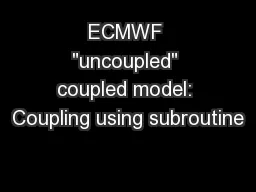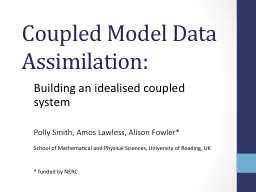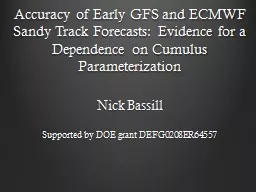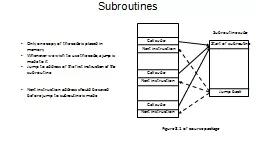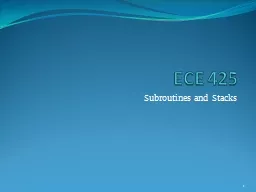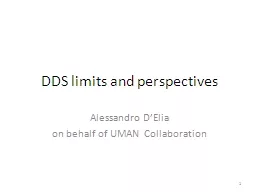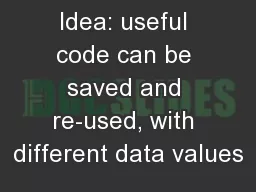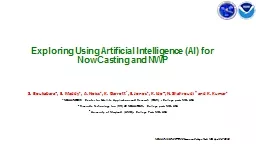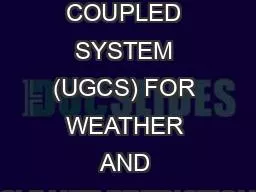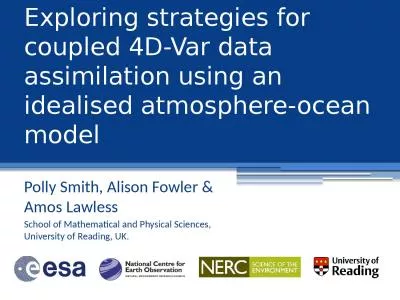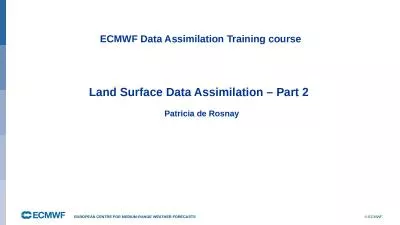PPT-ECMWF "uncoupled" coupled model: Coupling using subroutine
Author : beastialitybiker | Published Date : 2020-06-17
calls CW2015 Kristian S Mogensen Marine Prediction Section kmogensenecmwfint Overview of talk Baseline The focus of this talk is going to be on coupling of IFS
Presentation Embed Code
Download Presentation
Download Presentation The PPT/PDF document "ECMWF "uncoupled" coupled model: Couplin..." is the property of its rightful owner. Permission is granted to download and print the materials on this website for personal, non-commercial use only, and to display it on your personal computer provided you do not modify the materials and that you retain all copyright notices contained in the materials. By downloading content from our website, you accept the terms of this agreement.
ECMWF "uncoupled" coupled model: Coupling using subroutine: Transcript
Download Rules Of Document
"ECMWF "uncoupled" coupled model: Coupling using subroutine"The content belongs to its owner. You may download and print it for personal use, without modification, and keep all copyright notices. By downloading, you agree to these terms.
Related Documents

